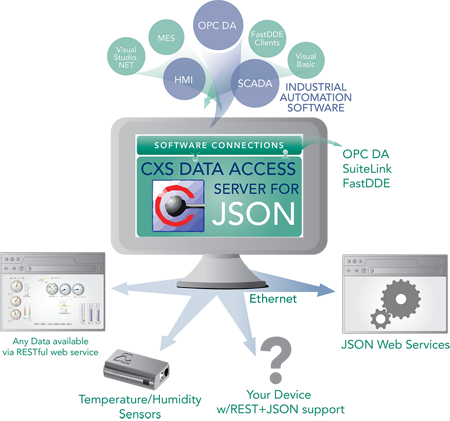Trends are moving towards making smarter operating decisions based on actionable information, whether you're in the manufacturing space, oil/gas, power/utilities or other industries where outside variables can substantially impact the bottomline.
Having access to current and historical information on all of those outside variables is key to having "smart" operations that maximize profits in the most efficient manner possible.
We're going to discuss several sources of such important outside variables that, in the past, may have been difficult to integrate into a control system such as an HMI, SCADA or MES and how they are now available in an easy-to-consume, JSON RESTful web services format.
1. Power/Utilities Statistics & Pricing
Knowing how much you have to pay for the energy to run your operations is a key factor in how profitable you will be over a period of time. Perhaps it's smarter to not operate at all for a certain period of time or to operate at different capacities depending on the current cost of energy.
Specific sources for energy pricing information will largely be dependent on the location of interest and whether you require real-time pricing information or time series historical data.
The US Energy Information Administration (www.eia.gov) provides a very useful API exposing a variety of information such as average retail price of energy by state at the monthly, quarterly and annual levels in cents/kilowatthour. Real-time pricing information, when available, would typically be provided by your specific energy provider, which is becoming more and more common.
2. Commodities Statistics & Pricing
Knowing how much commodities such as oil or coal are going to cost plays a vital role in calculating overall expenses when your business requires those commodities for operations. As with energy pricing, if the cost is too high, it could make lower levels of operation or not operating at all the best strategy until the costs come down
On the other hand, if you're in the business of producing these commodities, knowing the current price that you will receive for these materials can make all the difference in how profitable your production will be - prompting the decision of whether it makes more sense to produce little or none of a commodity until the price comes back up.
Again, as with energy pricing, specific sourcehttp://www.softwaretoolbox.com/webservice2opc/s will be dependent on the particular commodity you’re interested in – oil, natural gas, coal, etc. And, again, the US Energy Information Administration has a multitude of time series pricing, production, consumption and other data by commodity type.
3. Natural Resources Statistics & Pricing
If your business depends on a natural resource such as water, metrics on supply, demand and pricing can be important to your cost of operations.
For natural resources, the specific source and availability of data will depend on the particular natural resource you’re interested in.
For instance, the US Geological Survey publishes a lot of useful water resource information via its RESTful web service (http://waterservices.usgs.gov/rest/IV-Service.html).
4. Weather Data
Since you're business operates on planet Earth, one of the most widely relevant external variables in running your business is the weather - current temperatures, humidity, wind speeds, wind direction, forecasts and historical pattern data. Weather data can affect many aspects of an operation.
If you're in the wind energy space, for instance, knowing the current and forecast wind speed and direction is important to how much yield will be possible from wind turbines in a particular location over a certain period of time. That's one example - depending on your industry, the weather can affect your operations in a variety of ways.
Now, there are several weather services out there that expose current and forecast weather data for any location. One such popular service is OpenWeatherMap (http://openweathermap.org/api) – they provide a free weather API available in JSON format for current, historical and forecast weather variables and locations can be specified by zip code, city or even latitude/longitude.
Additionally, for a comparison of various other weather information APIs out there, there is a useful article by ClimaCell that runs down eight of the most popular APIs here.
5. Facilities Temperature & Humidity Data
What if your business requires a specific combination of temperature and/or humidity in the vicinity for optimal operating conditions?
Environment monitoring devices such as Avtech Room Alert units (http://avtech.com/Products/Environment_Monitors) have built-in RESTful web services supporting JSON and capture temperature and humidity data of the facilities where they are installed, making it easy to keep an eye on the current temperature or humidity of a location in real-time.
So those are examples of some key data that might typically be considered in making smart decisions about operations in almost any industry that are readily available in a JSON RESTful web service. Would any of this type of information be useful to you in your own operations if you could easily access it from your control systems?




